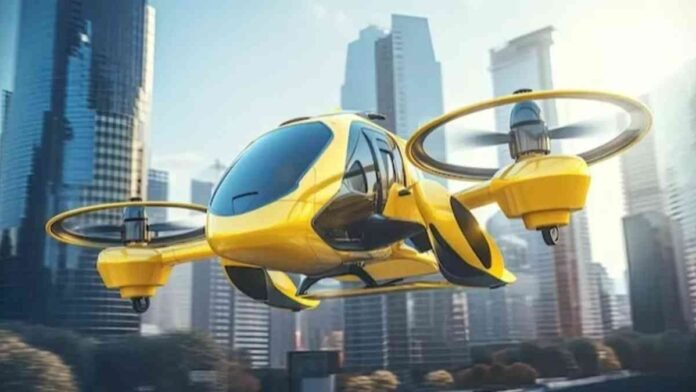The future of urban commuting in India. Top airline IndiGo with US-based Archer Aviation will launch an all-electric air taxi service by 2026
Imagine telling a Gurugram-based officegoer years ago, that can he reach his Delhi-based office in seven to eight minutes and he would think you are out of your senses. However, with the latest technology and commuting experience of air taxis, this transformation is now turning into a reality. Just a week ago India’s top airline IndiGo with US-based Archer Aviation all ready to launch its first taxi aircraft in India by 2026. This means that a 27-kilometer trip from Delhi could take as little as 7 minutes, compared to the 60-90 minutes it currently takes by car.
The prospect of air taxis holds significant promise in a country like India where traffic congestion in urban areas consumes huge travel time. There are already in the news after the tests and successful implementation of air taxis in cities like Dubai and Singapore. Again, before the news of a larger player like Indigo announcing its maiden launch by 2026, a Chennai-based startup ‘The ePlane Company’ is working in line while coming up with a certifiable prototype of an electric Vertical Takeoff and Landing taxi (eVTOL) by March next year. As per the company’s website, their flying e-taxi will initially be a 3- or 4-seater and take 14 minutes to reach a place that will take 60 minutes by a personal vehicle
Benefits of Air Taxis:
These air taxis are often electric or hybrid-powered so it will be-
- Greener, faster, and quieter modes of urban transportation
- Contribute to reducing carbon emissions
- Combating air pollution in urban areas
- A mainstream mode of transport
- Providing a sustainable solution to urban mobility challenges
- Minimizing environmental impact.
Cost Of Air Taxi Rides
One has to shell out Rs 2,000 to 3,000 each time you take a ride. Though the cost may not be financially pliable to the middle-class highly-paid professionals in cities who often prioritise convenience over cost may welcome the move.
Challenges right Now
One needs highly advanced technology and infrastructure that support air taxi operations. First of all, the government need to develop ‘vertiports’ for the landing and take-off of such all-electric taxi aircraft. urban infrastructure is right now not well-equipped to handle this as developing these vertiports in India’s highly congested urban areas. The primary reasons are logistical challenges, like land acquisition, regulations, and the development of charging stations. The issue of integrating air taxis into existing airspace management systems is another major challenge. While Air taxis in India prepare to take flight, civil aviation needs comprehensive testing before public implementation, it is a promising travel experience that will be faster and more efficient for commuters across cities.



